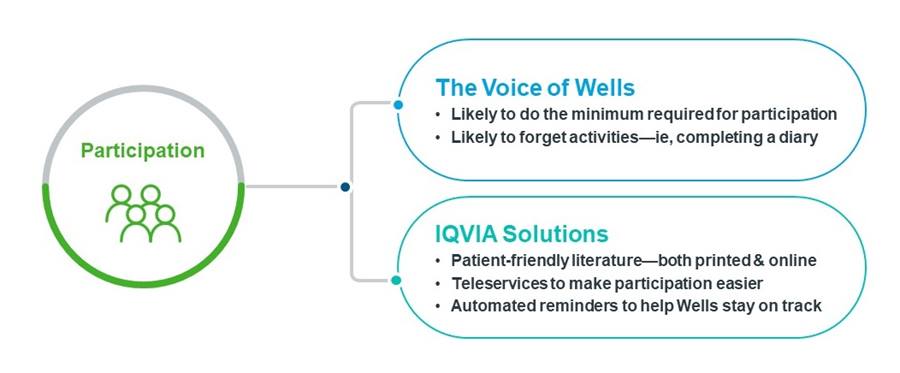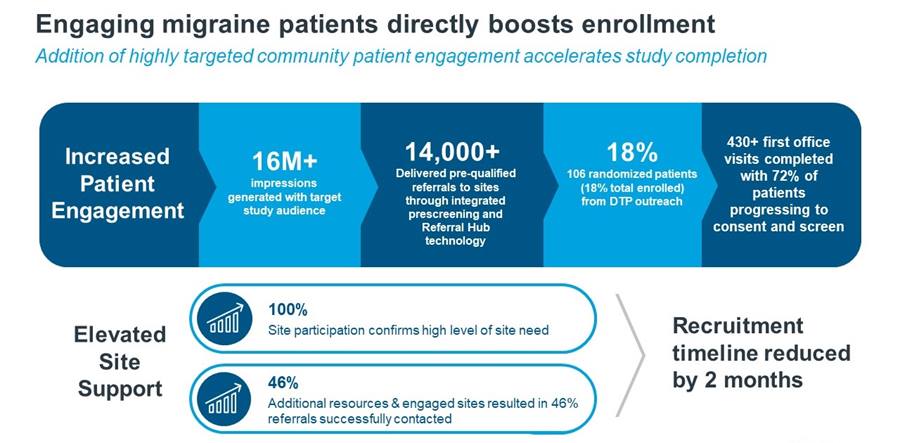





















- Blogs
- The ROI of Patient Centricity
Until relatively recently, patient recruitment for clinical trials was a fairly straightforward endeavor. Prior to the digital revolution, the clinical trial ecosystem was far simpler. Patient enrollment, therefore, required minimal strategy and insights. At the same time, sponsors were confined to using a limited range of channels in which to inform and engage patients—generally relying on tactics such as print media, posters, cold calling, and word-of-mouth referrals from their healthcare teams.
But today, like all of us, clinical trial participants of virtually all ethnicities and backgrounds exist in a digitally interactive universe. We engage the outside world almost effortlessly through smartphones, social media platforms, and sophisticated apps that offer extraordinary speed and customization. So as modern consumers, today’s trial candidates expect rapid answers, customized communications, and—particularly critical in optimizing patient recruitment—they expect their voices to be heard.
The science of humanizing the patient—and why it matters
Given the extraordinary paradigm shift, it isn’t surprising that the traditional means of recruiting patients for clinical studies is a daunting challenge—underscored by the sober reality that one-third of all clinical trials experience delays in recruitment.
This is why we at IQVIA have developed an insight-based, patient-first approach to patient enrollment—optimizing success by engaging the full range of potential participants in a manner that is more relevant, inclusive, and convenient for their lifestyle. We achieve this success by adopting the same principles, methodologies, and robust analytics employed by key consumer industries—such as the entertainment industry, travel & leisure, banking, real estate, and many others (examples below).

Like these consumer industries, IQVIA’s patient-first approach monitors and captures nuanced insights, harnessing these learnings to create more effective, modern communication tools that drive a more personalized, ethnically diverse, and meaningful experience for patients living in today’s world.
The IQVIA Patient Persona: putting insights into action
Our rigorous methodology begins by developing a powerful reservoir of knowledge known as the IQVIA Patient Persona. The Patient Persona sets into motion the processes that enable us to determine which candidates are optimal to target, when to engage them, and how to tailor communications in a way that provides maximum value to potential participants.
This critical foundation is the culmination of extensive information-gathering and analysis across a broad range of sources supporting the trial objectives and the patient’s medical condition. This includes, for example, granular demographic data, behavioral analytics and preferences, epidemiologic data, qualitative insights, multi-disciplinary subject matter expertise, and often tailored assessments from our Therapeutic Centers of Excellence.
Once these inputs are distilled, synthesized, and prioritized, we bring them to life through the Patient Persona, which allows us to “see” the barriers to recruitment through the eyes of our patient population. This empowers us and sponsors to be highly precise when converting insights into action.
Below is a simplified excerpt from “Wells”, an IQVIA Patient Persona created for a hypertension study.

On to the IQVIA Empathy Map: treating trial participants as consumers—and trials as products
Like the cutting-edge consumer industries we mentioned earlier, we at IQVIA optimize the impact of patient communications by harnessing our rich understanding of our “customers” in order to determine exactly when, where, and how to engage them most effectively.
Once the Patient Persona is crystallized—providing a thorough understanding of patient preferences, biases, concerns, and lifestyle choices—we develop a meticulous tactical blueprint known as the IQVIA Empathy Map. This powerful mapping tool pinpoints, analyzes, and informs optimal communications at pivotal touchpoints along the trial journey.
Below, for example, are pivotal touchpoints for the “Wells” Patient Persona (above) for the hypertension study. It is critical to note that each pivotal point within Wells’ journey is essentially a microenvironment, bringing a unique set of barriers and opportunities for engagement. To ensure maximum success, we customize each tool, channel, and service to align with the unique requirements and dynamics of each pivotal touchpoint.

To illustrate this, consider the participation touchpoint for Wells (center circle, above). The process targets and plans for the specific challenges and opportunities inherent in the participation phase of the trial journey. The visual below demonstrates how IQVIA works to ensures the right channels, materials, language, and tonality are sufficiently tailored to motivate patients and build trust during the participation phase. Note that with Wells, for example, we determined it would be essential to provide automated reminders and teleservices for this particular patient population as they tend to be “low commitment” trial participants.

When implementing tools and services to engage trial participants, it’s helpful to understand that clinical trials, in many ways, are a product. No two studies are exactly alike. And each have distinctly different features and benefits, which may or may not be appealing to potential participants. Needless to say, we in the clinical trials industry must always adhere to the highest standards of transparency when communicating with patients about our trials and what will be expected from them.
Results: exceeding expectations in hypertension—thanks to Wells
In our hypertension study, we had the advantage of maximizing engagement with this specific patient population by leveraging the Wells Patient Persona we developed, and then carefully planning our tools using our empathy map. As a result, we were able make informed choices about the optimal mix of tools and services that would be most effective for each pivotal point within Wells’ trial journey.
As a result, our direct-to-patient recruitment far exceeded projections. Patient engagement was dramatically enhanced, and screen-fail rates were also significantly reduced. Below is a sample of some of the powerful metrics underscoring our success of our recruitment:
- 11.6 million impressions were generated from multi-channel campaigns
- 9,400 pre-qualified referrals to sites were achieved through integrated pre-screening, leveraging our unique Referral Hub Technology
- Our campaign accounted for 16% of randomized patients included the trial—far exceeding projections
- Significantly reduced screen-fail rates were achieved.
At the same time, we leveraged our IQVIA Site-Enablement Solutions—that is, our specialty resource solutions that are customized for sites—which significantly enhanced recruitment and pre-screening efforts:
- 83% of sites we contacted expressed the need for additional support
- Additional resources & engaged sites resulted in nearly 60% of referral follow up
Not surprisingly, the sponsor of this hypertension study renewed our recruitment campaign beyond its original scope—driven by the rigorous development of the Patient Persona and the tried-and-true science of empathy mapping.
Exceeding expectations in the migraine space—leveraging “Linda”
The visual below shows more impressive data from a migraine study using essentially the same methods we employed in hypertension. Again, our Patient Persona led the way—in this case, Linda, a 45-year-old migraine sufferer overwhelmed by conflicting sources of online information. This campaign generated 16 million impressions with our target population, and reduced the overall recruitment timeline by 2 full months, a significant acceleration of this key milestone.

Whether a site-based or decentralized clinical trial (DCT), targeted patient engagement, meticulous planning, and sound judgment is key
As we’ve described, today’s trial participants are diverse, modern consumers—accustomed to rapid solutions, customization, and convenience of services. And the emergence of decentralized clinical trials (DCTs) provide additional opportunities to catapult patient-centricity to new and unprecedented heights.
But irrespective of whether a study is conducted in the site or in the home, we at IQVIA remain judicious in selecting the right tool—and at the right time and place within the patient journey. We steer sponsors away from a “shiny new penny” that may offer a cutting-edge technology but is ill-fit to produce optimal engagement.
At IQVIA we achieve success by focusing on 3 core objectives: motivating patients, engaging sites, & personalizing solutions.
These 3 principles are now absolutely essential and require deep subject matter expertise and extensive capabilities.
Patient centricity is not just the right thing to do—it leads to greater inclusion of traditionally underrepresented populations, more robust clinical trials, and ultimately, better healthcare outcomes.
To hear the entire webinar on demand, click here to learn more about The ROI of Patient Centricity: Faster Recruiting, More Diverse Study Populations and Engaged Trial Participants.





